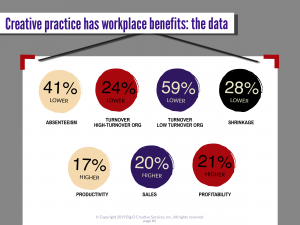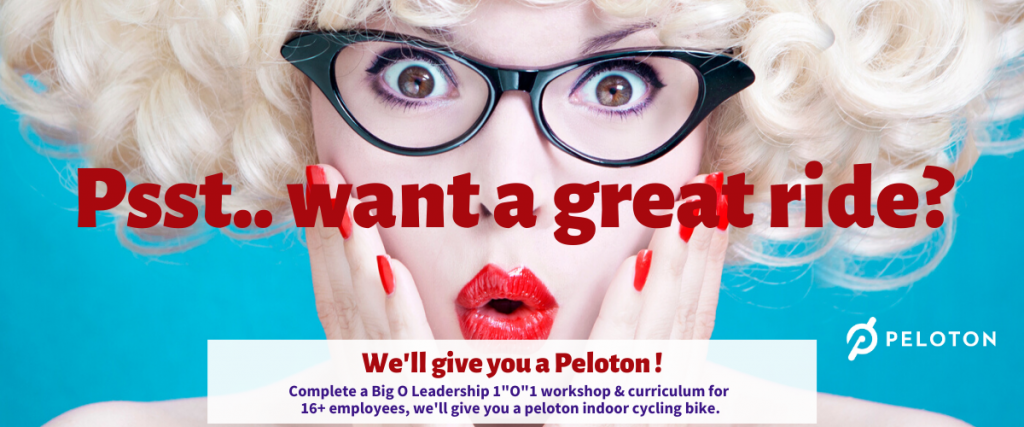When we attend presentations and conferences in tech and high-tech communities, we are astounded by the lack of visual and verbal appeal of many tech brands. And often, tech brand campaigns: whether targeted to investors, partners or end-users, are similarly bland, amateurish and, well, ugly.
Is as if the technologists have created the brand identity – because, well, usually they have.
And we’re genuinely puzzled. You see, in the 50+ combined years we’ve worked with industry stalwarts like Lockheed Martin, Axis Communications, HID Global, Microsemi and many more, we find their engineers more often than not have an artistic bend. So why aren’t the tech brands of budding companies more creative and appealing to customers than these brands belie?
Our hypothesis? Because they’re not allowed to practice creativity as engineers in the workplace.
The segregation of tech and arts
We’ve met and experienced the incredible gifts of engineers in missiles and weapons design who also author, direct and act in plays. We’ve heard the beauty of piano compositions by mechanical engineers crafting millimeter wave imaging systems. We’ve read the amusing and engaging fiction of engineers developing nano-particles to deliver bioactive ingredients to the dermis and enhance the efficacy of pharmaceuticals.
But here’s the problem. No one lets them practice – or even sometimes acknowledge – their creativity while they are at work. This is especially true in start-ups, where funds are limited and the CEO, CTO and CMO may all be one person, the tendency to rely on the most familiar and comfortable skills, means one thing…
…the creation of brands, names, campaigns and marketing materials that are simply “over-engineered”
These ugly tech brands and campaigns are problematic, not just because they lack visual appeal. I recently sat at three different tables with serious investors at a tech brands capital conference. To a fault, the potential investors – not engineers themselves – complained that either the presenters never showcased the benefits of the product they were “selling” for investment, or they did it so late in the presentation and in a disjointed manner, they had “lost” the audience.
And if investors who regularly seek out the next great technology are unable to easily discern a product benefit in a brand; can you imagine the lack of interest to an end-user?
These brands have none of the simplicity and ease the engineer is so good at creating in product development because they are not allowed to practice their creativity in other areas. So, a great product suffers under the weight of brands and campaigns that are “over-engineered.”
Embarrassment prevents riches
Northwestern University’s McCormick School of Engineering proposes that there is much we are missing by not allowing scientists and engineers to engage (with artists present) in the practice of art. There are barriers and preconceived notions about creativity they have discovered in experiments allowing engineers, scientists and artists to self-select and work together on certain projects. Also, there is an innate discomfort that comes with such collaborations:
“One needs to overcome stereotypes. Both sides have a romantic, almost cartoonish, view of the other… Engineers equate art with paintings, photographs, and sculptures, and leave out conceptual art, installations, and much more. Artists equate engineering with technology and not with the human factors and passions that animate it”.
We propose that this discomfort prevents well-rounded approaches to their respective disciplines. But we further believe that the discomfort can be overcome with practice.
Practice what doesn’t come naturally
As marketing communications experts, we are more naturally creative.
So, when it comes to understanding our clients’ products and services and developing their tech brands, we work hard at the “practice” of understanding complex technologies. By doing intense research, having a diverse technology portfolio and practicing the skill of “speaking geek,” our team of creative experts can have a healthy balance between understanding the technology of a product and creating brands and campaigns that provide a clear picture of benefits.
We practice what doesn’t come naturally to us.
We also ‘work hard’ at the practice of creativity beyond the conventions of our daily work. Every team member we have is engaged in artistic practices that fall outside of the boundaries of “creative marketing.” We have dancers or singers who spearhead the strategic side of marketing planning. We have visual artists who aren’t graphic designers. We have creative writers that are not part of the copywriting team. We have press writers who author mystery novels outside of work. And we have performing artists who prefer spending less time in client engagement, and prefer to be behind a computer typing copy.
We also make regular engagement in creativity a part of our process. Stuck on a tagline? Then go to Target’s toy aisle (boy do we miss ToysRUs!) and play. Can’t think of a concept for an ultrawideband for use in life-safety, head to a carnival and “boom” you see the livestock show and come up with a “When Pigs Fly” campaign.
Frankly, our clients need a Big O
Why are we saying all of this to potential clients? After all, isn’t it our job to bring creative brands and campaigns to life?
Well, we first are concerned with startups who don’t have financial resources to hire an outside agency (and when they do, we really don’t want to have to toss out their brand and start over). They are endangering their ability to get funding because their brands are ugly.
But also, at several points in our agency life, we have run headlong into what we call the “Thud of FUD” (fear, uncertainty and doubt) with more mature clients.
We’ve created hugely compelling, strategically founded campaigns that are provocative, compelling and would generate positive ROI. For example, a Zombie-themed campaign complete with “War of the World”-style VNRs, flash mobs and potentially viral video, is now on the security camera clients’ cutting room floor. A “Super-hero” campaign turning IT service contractors from geek to chic is buried in our archives. An Instagrammable dragon-puppet for offline event engagement is merely a few sketches and a brief.
And it breaks our collective hearts!
We believe a lack of creative practice puts these clients — and their tech brands — into a closed loop of awareness. They can’t see the customer-engagement forest for the internal-messaging trees, They can’t imagine a campaign that doesn’t follow traditional patterns many tech companies use of showcasing the “fear factor” of technology advancement, as opposed to the wonder of it. And because of this, we, and they, lose the chance to garner outstanding ROI with really creative work!
So, we decided to DO something about it.
And that’s why we are introducing our sister company: Big O Creative Services. (here’s a pretty great promotion to get you started!)
Big O Creative Services improves KPIs
Big O Creative services improves company KPIs by using creative professionals to teach creative practice in the workspace. We believe “well-rounded people mean business.”
Sounds like bullsh*t, right? All airy-fairy and zen-like no?
Well, bullsh*t it isn’t. Gallup publishes a study every two years that talks about the benefits of employee engagement. Of the twelve questions they ask of enterprise companies across many verticals, 10 of them are directly related to creative practice.
And they have proven that companies who allow their employees to engage in creative practice see benefits from 17-59% in key metrics like improved sales, higher profitability, better productivity and reduced absenteeism and turnover.
So, we teach companies how to implement creative practice by first holding a workshop for your leadership teams to understand the bridge between creativity and better workplace productivity by engaging in creative play. Visual artists, dance instructors, mixologists, chefs…even baton twirlers and more, push your leadership team to activate their creative chops.
And zen-like it is. Much like a meditation or yoga practice, it has been documented that companies can’t just pay lip service to creative practice at company retreats and annual meetings. Creative engagement has to be practiced regularly. So, we give you the tools to do that.
There’s a lot more to be said about why Big O works, but back to why is Spark Rocket Marketing expanding into this arena?
Because we want every client we work (especially our tech clients) to be so engaged in creative practice, that they will understand the potential impact of Flying Pigs, Dancing Hamsters or CEOs standing on alligators and whatever creative craziness we propose will positively impact their ROI and not let FUD be the driver of decision-making. We want start-up tech brands and tech campaigns to be as good as their large enterprise counterparts!
So check out Big O Creative Services or just start a tiny little creative practice in your workplace – here’s a FREE sample of our curriculum exercises to get you started.


